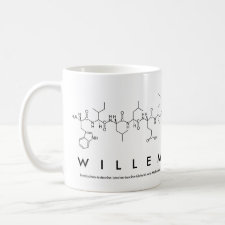
Authors: Albers W, Milani R, Tappura K, Munter T, Resnati G, Metrangolo P
Article Title: Self-Assembly of Pyridine-Modified Lipoic Acid Derivatives on Gold and Their Interaction with Thyroxine (T4).
Publication date: 2013
Journal: International Journal of Molecular Sciences
Volume: 14
Issue: (2)
Page numbers: 3500-3513.
DOI: 10.3390/ijms14023500
Abstract: Pyridyl derivatives of lipoic acid were prepared as ligands for the study of the interaction with thyroxine (T4). Thin self-assembled films of the ligands were prepared in 70% ethanol on gold and their interaction with T4 was studied by titration experiments in an aqueous buffer solution using Surface Plasmon Resonance (SPR). The thickness and refractive index of the ligand layers were calculated from SPR spectra recorded in two media, also allowing for surface coverage and the density of the layers to be estimated. Two ligands, a 4-pyridyl and a bis(2-hydroxyethyl) derivative of lipoic acid, were selected to investigate the feasibility for producing molecularly imprinted self-assembled layers on gold for T4. The methodology was to co-assemble T4 and the ligand onto the gold surface, elute the T4 from the layer under alkaline conditions, and study the rebinding of T4 to the layer. Multiple elution/rebinding cycles were conducted in different buffer solutions, and rebinding of T4 could be observed, with a moderate binding affinity that depended greatly on the solvent used. More optimal binding was observed in HBS buffer, and the affinity of the interaction could be slightly increased when the 4-pyridyl and bis(2-hydroxy-ethyl) derivatives of lipoic acid were combined in the imprinted layer
Template and target information: thyroxine, T4
Author keywords: thyroxine, self-assembly, imprinting, noncovalent interactions, surface plasmon resonance (SPR)



Join the Society for Molecular Imprinting

New items RSS feed
Sign-up for e-mail updates:
Choose between receiving an occasional newsletter or more frequent e-mail alerts.
Click here to go to the sign-up page.
Is your name elemental or peptidic? Enter your name and find out by clicking either of the buttons below!
Other products you may like:
 MIPdatabase
MIPdatabase









